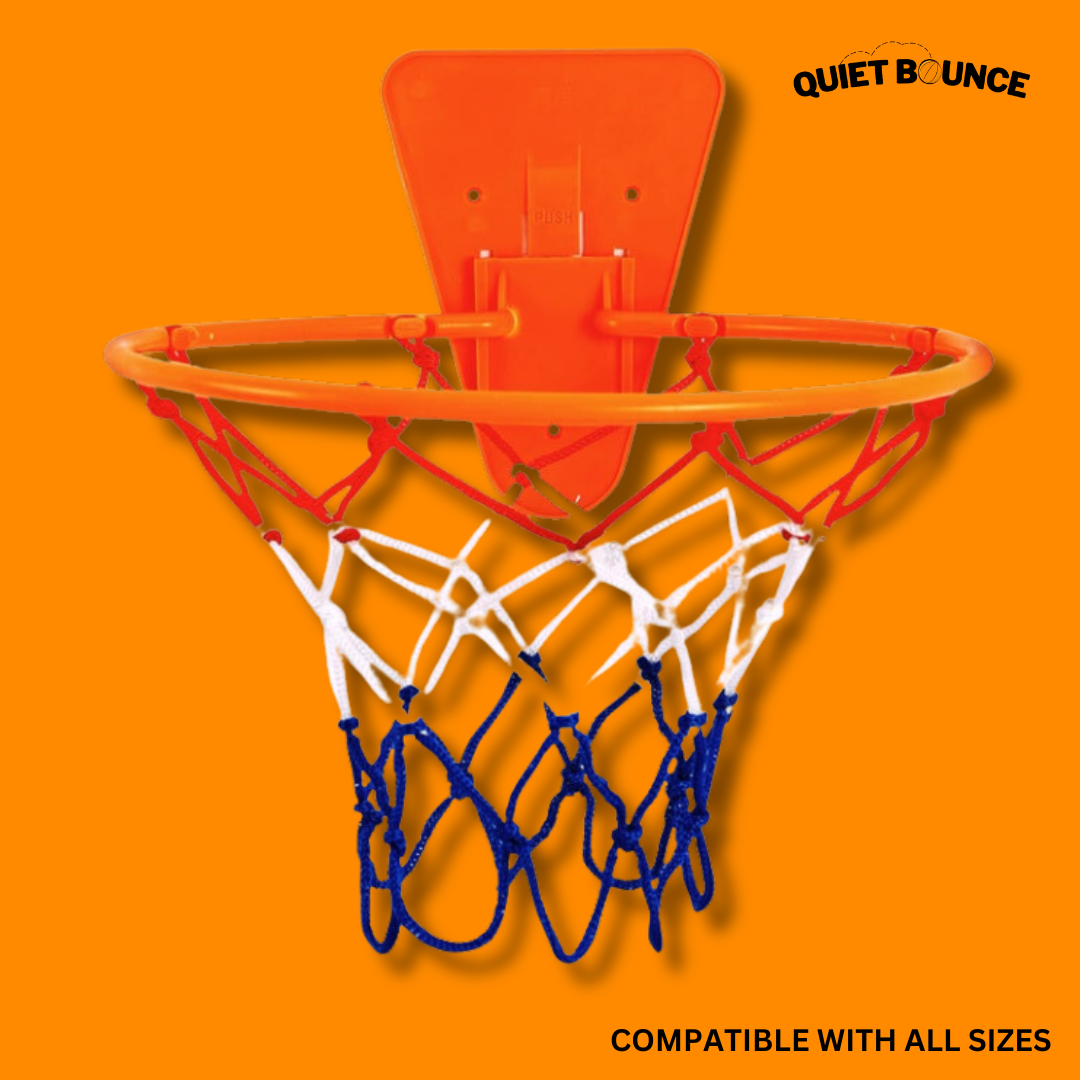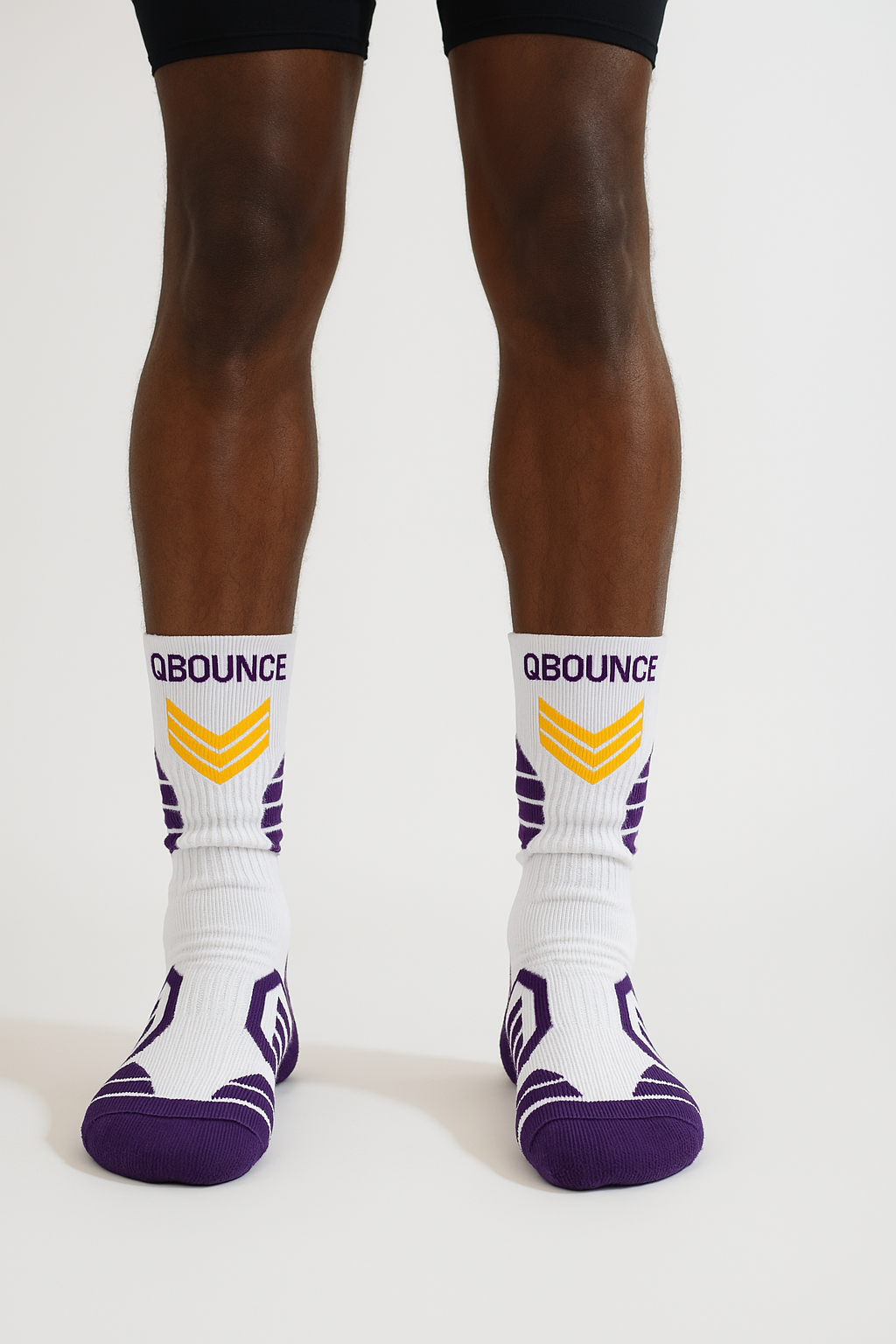
The Different Types of Basketball Dribbles
Share
Dribbling is the foundation of all ball control in basketball, so players have developed specialized techniques to accomplish different goals. Whether you want to maintain control while a teammate gets into position, sprint from one end of the court to the other, or lose a defender to get off a shot, your dribbling skills must be on point.
Let’s explore some dribbling techniques, from primary ball control moves to more advanced dribbles that will elevate your game. If you can practice all these with your basketball at home, you’ll undoubtedly take your basketball skills to the next level.
Basic Dribbling Types for Ball Control
Here are some of the most fundamental dribbling techniques you must master to maintain possession of the ball while dominating the court.
High-Bounce Dribble
Use this type of dribble when facing tight defense or trying to see over taller opponents. When you dribble the ball with more force, it bounces higher and gives you a better view of the court. Maintain a low and balanced stance to ensure stability and agility, then push the ball down with enough force to make it spring back up to a comfortable height.
Low-Bounce Dribble
Use this technique when maneuvering through tight spaces or facing aggressive defenders since it keeps the ball close to the ground for better control and minimizes the risk of turnovers. Stay low to the ground for balance and quickness. Keep your hand positioned on top of the ball while applying minimal force.
Change-of-Pace Dribble
Use this move to create scoring opportunities. By varying your speed, you can catch defenders off guard, forcing them to react and potentially creating openings so you can drive to the basket or set up teammates to score. Dribble the ball comfortably, then accelerate abruptly, unleashing a quick burst of speed.
Speed Dribble
Use this dribble to quickly advance the ball up the court, especially in fast break situations. Push the ball out in front of you with quick and efficient movements, and you’ll cover a significant distance quickly, putting pressure on the defense. This dribbling drill requires you to combine speed, control, and decision-making to navigate defenders and make sound choices effectively.
Advanced Dribbling Techniques
Once you’ve mastered the basics, these moves will add deception and creativity to your repertoire, making you more unpredictable and challenging to defend against.
Crossover Dribble
Use this technique to separate yourself from the defender when you change direction or drive to the basket. Start by dribbling the ball with one hand while approaching the defender. As you step forward, quickly cross the ball from one hand to the other in front of your body. This sudden change of direction can catch defenders off guard and create space for you to attack the basket or pass.
Between-the-Legs Dribble
Use this move when you need to change direction quickly but a defender guards you extra closely. Dribble the ball with one hand, then step forward with the opposite foot. As you step, quickly pass the ball between your legs to your other hand. This flashy move requires coordination and good timing for a smooth execution.
Behind-the-Back Dribble
Use this dribble to change direction and confuse the defender quickly. Push the ball behind you and toward your opposite side. At the same time, move your opposite hand behind you to make contact with the ball and continue the dribble. This move requires a lot of coordination but can be a very effective evasive maneuver once you develop the control to pull it off.
Hockey Dribble
Use this technique, also called the "through the legs" dribble, to catch a defender off guard and create an opportunity to pass or drive to the basket. Tap the ball through your legs to your other hand as you step forward. Inspired by hockey players, this move is one you can perform repeatedly, alternating your legs, to keep the defender off balance.
Reverse Dribble
Use this move to change direction swiftly and create space between you and the other team. As you’re dribbling forward and approaching a defender, quickly pull the ball back and dribble it behind your body, reversing your direction of movement. This changes the direction of your momentum and, ideally, throws off the defender.
Half-Reverse Dribble
Use this dribble — a variation of the reverse dribble — to only partially change direction. Instead of completely reversing your movement, do a quick dribble behind the body and continue in a slightly different direction. This move helps confuse the defenders and makes them hesitate.
Protection Dribble
Use this technique to shield the ball from aggressive defenders in tight situations. Keep your body between the ball and the defender while using your non-dribbling arm to create a barrier. While it sounds simple, it requires experience to know how to position your body and the ball in a way that makes it difficult for a defender to execute a steal.
If you can master these different types of dribbles, you’ll be well on your way to becoming a skilled and versatile player. Remember, it takes repetition to understand better the perfect timing, spacing, and body control. So, get out there and practice your basketball drills, and soon, you’ll have all the confidence you need to execute these moves flawlessly come game time.




